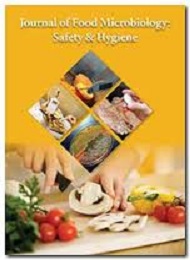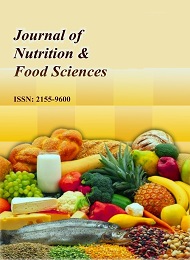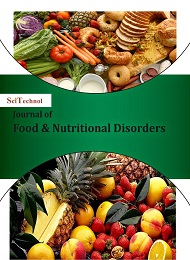Theme: Exploring claims, controversies, interests and values connected with food
Food Engineering Congress 2019
Conference Series LLC Ltd cordially invites the participants all around the globe to Food Engineering congress which is scheduled on December 02-03, 2019 at Tokyo, Japan which includes prompt keynote presentations, Oral talks, Poster presentations and Exhibitions. The previous Food Engineering conferences were held at Kansas City-USA 2013, Vegas-USA 2014, London-UK 2015, Australia 2016, France-2017, Greece- 2018 and had achieved a grand success. Now it is the time for the prestigious Food Engineering Congress 2019 to address latest innovations, industrial & modern technologies in food engineering, food safety management, and challenges in the field of food engineering. Food Engineering Congress 2019 is the premier event that brings together a unique international mixture of experts, researchers and decision makers both from academia and industry across the globe to exchange their knowledge, experience and research innovations to build a better world of Food Scientists & Technologist meet.
Food engineering is a comprehensive food technology field involving the various disciplines of food science, agriculture, microbiology, chemistry, and engineering. Using careful research methods, high-tech equipment and sophisticated processes, food process engineering covers the entire gamut from procuring raw food materials to processing them into food products to preserving, packaging and delivering the food products to the consumer market. The engineering of food, particularly in the form of genetic food engineering, is a huge enterprise needed to feed growing world populations, and this means there will be a steep increase in these jobs in the coming years. This century we are dedicating to food science which will provide food safety security through engineering and innovation with a promise “Food for all”.
Food engineering educates about the many challenges is to employ modern tools, technology, and knowledge, such as computational materials science and nanotechnology, to develop new products and processes. Simultaneously, improving quality, safety, and security remain critical issues in food engineering study. New packaging materials and techniques are being developed to provide more protection to foods, and novel preservation technology is emerging. Additionally, process control and automation regularly appear among the top priorities identified in food engineering
With the presence of highly affiliated personalities, researchers, scientists around the globe focused on food production, this conference is providing the platform for learning and sharing the new developments in this field from technology “Gurus”. This is the place to meet the current and potential speakers and receive the name recognition.
Food Engineering Congress welcoming guests including Presidents, Vice-presidents/Directors, Academic researchers, Scientists, Business delegates, Experts, Departmental managers, Professors and students from Academia.
Why to attend???
Food Engineering Congress event shall lay a platform for the interaction between specialists around the world and aims to accelerate scientific discoveries creating the conference an ideal platform to share expertise, foster collaborations across trade and world, and assess rising technologies across the world.
Researchers across the world are going to showcase their research work at this platform, wherein the students are going to learn innovative techniques from them. Moreover, this platform provides a scope to share each other knowledge and execute it for the betterment soon A novel chance for advertisers and sponsors at this International event.
Target Audience:
- Food Scientists
- Food Product Researchers
- Quality Assurance
- Food Chemist
- Food Microbiologist
- Food Researcher
- Food Biochemists
- Food Biologists
- Food Technologist
- Food Engineer
- Food Biotechnologist
- Nutritionist
- Food Technology Researchers
- Nutrition Associations and Societies ·
- Business Entrepreneurs
- Students
- Young researchers
- Industrialists
Food Engineering Congress
December 02-03, 2019 Tokyo, Japan
Conference Series LLC Ltd invites all the participants from all over the world to attend Food Engineering Congress during December 02-03, 2019 Tokyo, Japan which includes prompt Keynote presentations, Oral talks, Poster presentations and Exhibitions.
Food Engineering Congress 2019 offers a best platform with its well organized scientific program to the audience which includes interactive panel discussions, keynote lectures, plenary talks and poster sessions on the topics Food Technology, Chemistry of food, Food security, Food microbiology, Food analysis, Quality assurance, Nutrition, Food Biotechnology, current issues in Food Analysis, Food Technology Companies & Market Analysis, The conference invites delegates from Food Technology companies, Nutritionists, Academicians, Dieticians, Researchers, Food Analysis professionals, students, business delegates and Young researchers across the globe providing a better podium, interconnecting the latest research, technological developments in the arena as well as therapeutic aspects.
Track 1: Food Engineering:
Food engineering is a multidisciplinary discipline which combines microbiology, implemented physical sciences, chemistry and engineering for food and associated industries. Food engineering is not confined to, the utility of agricultural engineering, mechanical engineering and chemical engineering standards to food materials. food engineers offer the technological understanding switch vital to the production and commercialization of food products and services. Physics, chemistry, and arithmetic are fundamental to know-how engineering merchandise and operations inside the food industry.
Related Conferences: Food engineering Conferences, Food Technology Conferences, Nutrition Conferences, Food Science Conferences, Food Safety Conference.
Track 2: Food Science:
Food Science is a multi-disciplinary field involving chemistry, biochemistry, nutrition, microbiology and engineering to give the scientific knowledge to solve real problems associated with the food system. The basis of the discipline lies in understanding the chemistry of food components, such as proteins, carbohydrates, fats and water and the reactions they undergo during processing and storage. A complete understanding of processing and preservation methods is required which includes drying, freezing, pasteurization, canning, irradiation, extrusion. The ability to carry out the analysis of food constituents is developed along with statistical quality control methods. The microbiology and the safety aspects of food must be understood.
Related Conferences: Food engineering Conferences, Food Technology Conferences, Nutrition Conferences, Food Science Conferences, Food Safety Conference.
Track 3: Food Technology:
Food Technology is a science which deals with the techniques and principals involved in processing and preserving the food substances. The application of food science helps to manufacture safe, wholesome and nutritious food products. The investigation of food technology is to grow new strategies and frameworks for keeping the food protected and safe from normal damages like microbes and other miniaturized scale creatures. Food processing helps in preservation. It enhances the flavor and reduces the toxins in the food product which results in better distributional efficiency and easy marketing of the food product.
Related Conferences: Food engineering Conferences, Food Technology Conferences, Nutrition Conferences, Food Science Conferences, Food Safety Conference.
Track 4; Food Fortification:
Food fortification is also known as food enrichment. This process is addition of nutrients to food products higher than those which the food originally provides. This is done to handle micronutrient deficiencies across populations, countries and regions. Governments working with industry, international agencies and NGOs have used this method to eliminate micronutrient deficiencies in their populations.
Related Conferences: Food engineering Conferences, Food Technology Conferences, Nutrition Conferences, Food Science Conferences, Food Safety Conference.
Track 5: Food Rheology:
Food rheology is the study of the flow properties of food, i.e., the consistency and flow of food under certain conditions. The consistency, degree of fluidity, and mechanical properties are important in understanding the food texture, shelf life and stability of the food.. The acceptability of food products to the consumer is indicated by food texture, such as how spreadable and creamy the food product is. Food rheology is an important quality control aspect during food manufacture and processing
Related Conferences: Food engineering Conferences, Food Technology Conferences, Nutrition Conferences, Food Science Conferences, Food Safety Conference.
Track 6: Food Biotechnology:
The dietary habit of a living being is what it eats. This is mostly determined by its availability, its processability and its palatability of foods items. A healthy diet includes the mode of preparation of food and its storage methods that conserve nutrients from oxidation, heat or leaching, and that reduce risk of food-born-diseases. The science behind the interaction of components and other substances in food in relation to growth, maintenance, health, reproduction and illness of an organism is called nutrition.
Related Conferences: Food engineering Conferences, Food Technology Conferences, Nutrition Conferences, Food Science Conferences, Food Safety Conference.
Track 7: Food Biochemistry:
The study of chemical processes and interactions of all organic and inorganic components of foods is called Food chemistry. The organic or more appropriately the biological substances consist of such items as poultry, meat, milk, lettuce and beer as examples. It is related to biochemistry in its main components such as carbs, fats, and proteins, but it also includes areas such as water, micro nutrients, enzymes, food additives, flavors, and colors.
Related Conferences: Food engineering Conferences, Food Technology Conferences, Nutrition Conferences, Food Science Conferences, Food Safety Conference.
Track 8: Food Grading:
Food grading involves the review, assessment and sorting of assorted foods relating to quality, freshness, legal conformity and market price. Food grading typically happens by hand, during which foods are assessed and sorted.. Machinery is additionally accustomed to grade foods, and will involve sorting products by size, shape and quality. For example, machinery will be accustomed take away spoiled food from contemporary product
Related Conferences: Food engineering Conferences, Food Technology Conferences, Nutrition Conferences, Food Science Conferences, Food Safety Conference.
Track 9: Food Microbiology:
Food microbiology is the study that deals with the microorganisms that inhabit, create, or contaminate food majorly of microorganisms that cause food spoilage. "Good" bacteria, however, such as probiotics, are becoming increasingly important in food science. However, some microorganisms are essential for the production of food products such as cheese, yogurt, and other fermented foods such as bread, beer and wine.
Related Conferences: Food engineering Conferences, Food Technology Conferences, Nutrition Conferences, Food Science Conferences, Food Safety Conference.
Track 10: Food Packaging:
Food packaging is packaging of food materials. It provides protection, tampering resistance, and special physical, chemical, or biological desires. It may bear a nutrition facts label and alternative information concerning food being offered for sale.
Related Conferences: Food engineering Conferences, Food Technology Conferences, Nutrition Conferences, Food Science Conferences, Food Safety Conference.
Track 11: Food Supplements:
A dietary supplement could be a factory-made product supposed to supplement the diet once taken orally as a pill, capsule, tablet, or liquid. A supplement will offer nutrients either extracted from food sources or artificial, one by one or together, in order to increase the quantity of their consumption. The category of nutrient compounds includes vitamins, minerals, fiber, fatty acids and amino acids.
Related Conferences: Food engineering Conferences, Food Technology Conferences, Nutrition Conferences, Food Science Conferences, Food Safety Conference.
Track 12: Food Physical Chemistry:
Food physical chemistry is a branch of Food chemistry which deals with the study of both physical and chemical interactions in foods in terms of physical and chemical principles applied to food systems, as well as the applications of physical/chemical techniques and instrumentation for study of foods. This field encompasses the "physiochemical principles of the reactions and conversions that occur during the manufacture, handling, and storage of foods"
Related Conferences: Food engineering Conferences, Food Technology Conferences, Nutrition Conferences, Food Science Conferences, Food Safety Conference.
Track 13: Food Safety:
Food safety is an area of science describing handling, preparation, and storage of food in ways that prevent food-borne illness. The occurrence of two or more cases of a similar illnesses ensuring from the intake of a common food is known as a food-borne disease outbreak.
Related Conferences: Food engineering Conferences, Food Technology Conferences, Nutrition Conferences, Food Science Conferences, Food Safety Conference.
Track 14: Food Preservation:
Food preservation prevents the growth of microorganisms, or other microorganisms, as well as slowing the oxidation of fats that cause rancidity. Food preservation includes processes that inhibit visual deterioration, such as the enzymatic browning reaction in apples after they are cut during food preparation.
Related Conferences: Food engineering Conferences, Food Technology Conferences, Nutrition Conferences, Food Science Conferences, Food Safety Conference.
Track 15: Food laws and regulations;
Generally, “food law” is used to apply to legislation that regulates the production, trade and handling of food and thus covers the regulation of food control, food safety and relevant aspects of food trade. Minimum quality requirements are included in the food law to ensure the foods produced are unadulterated and are not subjected to any fraudulent practices intended to deceive the buyer.
Related Conferences: Food engineering Conferences, Food Technology Conferences, Nutrition Conferences, Food Science Conferences, Food Safety Conference.
Track 16: Nutrition:
Nutrition is the science that interprets the interaction of nutrients and different substances in food in relgard to maintenance, growth, reproduction, health and disease of an organism. It includes food intake, absorption, assimilation, biogenesis, catabolism, and excretion. The diet of an organism is what it eats, which is largely determined by the supply and palatability of foods
Related Conferences: Food engineering Conferences, Food Technology Conferences, Nutrition Conferences, Food Science Conferences, Food Safety Conference.
Track 17: Food Toxicology:
Food toxicology is concerned with assessing the injurious effects on living systems of chemicals present in foods. The chemical agents may be semisynthetic (e.g., pesticide residues, food additives, contaminants originating with processing machinery, or packaging materials) or of natural origin. They can even be generated within the course of preparing, processing, and preserving foods.
Related Conferences: Food engineering Conferences, Food Technology Conferences, Nutrition Conferences, Food Science Conferences, Food Safety Conference.
Track 18: Food Nanotechnology:
Nanotechnology is having an impact on many aspects of food science, from how food is grown to how it is packaged. Companies are developing nanomaterials that will make a difference not only in the taste of food, but also in food safety, and the health benefits that it delivers.
Related Conferences: Food engineering Conferences, Food Technology Conferences, Nutrition Conferences, Food Science Conferences, Food Safety Conference.
Related Associations:
USA:
American Bankers Association, American Beverage Association, American Frozen Food Institute, North American Meat Institute, American Mushroom institute, American Pie Council, The Bread Bakers Guide of America, Brewers Association, Council for Responsible Nutrition, Distilled Spirits Council, The Food And Beverage Association of America, International Foodservice Distributers Association, Retailed Owned Food distributers and Associations, US Poultry and Egg Association, International Dairy Deli Bakery Association, Academy of Nutrition and Dietetics, American Dairy Science Association, American Meat Science Association, American Oil Chemist’s Society, American Society of Enology and Viticulture, Association of Official Analytical Chemists, American Association of Cereal Chemists, Chinese American Food Society, Dieticians of Canada, International Food Information Service, Food Valley, Institute for Food Safety and Health, Institute of Food Technologists, International Association for Food Protection, International Union of Nutritional Sciences, National Chicken Council, American Cheese Society, American Frozen Food Institute, American Mushroom Institute
Asia Pacific:
Australian Institute of Food Science and Technology, International Life Science Institute- India, International Congress on Engineering and Food, Poultry CRC, Ministry of Food Processing Industries, Food Safety and Standards Authority of India (fssai), All India Food Processors Association, Association of Food Scientists and Technologists, Australian Food and Grocery Council
Europe:
International Association for Cereal Science and Technology, International Union of Food Science and Technology, The European Federation of Food Science and Technology, European Food Information Resource, European Hygienic Engineering and Design Group.
Africa:
National Agency for Food and Drug Administration and Control, African Continental Association for Food Protection, South African Association for Food Science and Technology, African Seed Trade Association, Food Africa, AAFEX, Food Security and Nutrition in Africa, South African Association of the Flavour & Fragrance Industry
Global Market:
The global food technology market expands drastically. By 2022 the expected growth of food technology market is over $250.43 billion. Each aspect of food technology market is blooming. The global market for yeast products reached $5.8 billion in 2013. In 2019, this market is expected to grow to $9.2 billion, with a compound annual growth rate (CAGR) of 7.9% from 2013 to 2019. The global market of probiotic ingredients, supplements, and foods reached nearly $23.1 billion in 2012, $27.1 billion in 2013 and in 2018 expected growth is $36.7 billion with a compound annual growth rate (CAGR) of 6.2% over the five-year period from 2013 to 2018. With $21.7 billion in 2012 and $23 billion in 2013 and expected reach of $31.3 billion by 2018, the global market for equipment used in food processing and packaging is rising at a five-year compound annual growth rate (CAGR) of 6.3% from 2013 to 2018.
With nearly 9.6 billion pounds in 2012 and in 2013 slightly more than 10 billion pounds the global healthcare packaging market is expected to increase and reach more than 13 billion pounds by 2018, which corresponds to a 5.6% compound annual growth rate (CAGR). After increasing at a five-year compound annual growth rate (CAGR) of 5.6%, The U.S food safety testing market is successful. This market was valued at $3.3 billion in 2013 and in 2017 the market reached nearly $4.4 billion. In 2011 the global market for sugar and other sweeteners was nearly $99.1 billion. The market reached nearly $97.2 billion by 2017 at a CAGR rise of 4.6%.With a compound annual growth rate (CAGR) of 7.1% between 2012 and 2018; Sales of starches and derivatives were $51.2 billion in 2012 and by 2018 expected to reach $77.4 billion. The expected growth of $1.4 billion in 2018 from $1.2 billion in 2012 was analyzed for the global market of commercially used carotenoids with a compound annual growth rate of 2.3%.
USA:
Food processing in the U.S. has come a long way since the 1900s. Companies started developing products that have longer shelf life and were easy to carry. As investors saw the opportunity in processed foods more and more companies entered the market which not only created jobs but also led to a rise of the American food manufacturing industry around the world. Presently, Coke is distributed in more than 200 countries making the product a global icon. Similarly, Mars Inc., which started out as a candy manufacturer, now has departments looking after pet care, biotech, and food and beverage, distributing its products internationally. ConAgra Foods has 29 brands which bring in annual retail sales of $100 million each. Thus these companies are dominating the international market. Companies provide much needed jobs to communities. More than 1.5 million people are currently employed by food manufacturing firms in America.
In Kentucky, logistics has become the major attraction for companies. In Ohio, the low tax structure acts as an attraction for food companies. Pennsylvania’s Lehigh Valley has the highest number of beverage manufacturers. The U.S. food industry will have a steady growth of 2.9% CAGR through 2022. In the future the processed foods industry gives economic developers more opportunities to create jobs and attract projects.
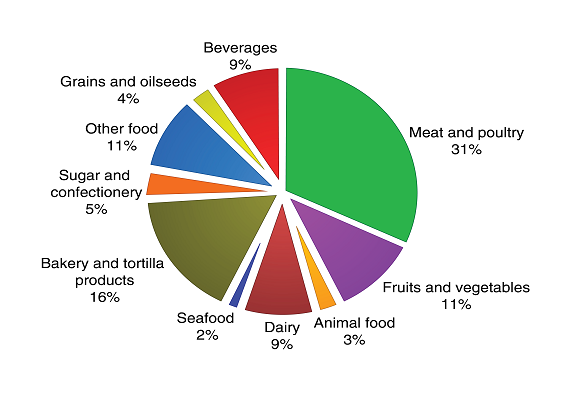
Employment in various food industries in the year 2015
Europe:
Turkey is forecast to see the strongest growth in F&B sales across Europe between 2017 and 2020, with average annual growth of 8.8%. Some of the strongest growth over the next four years is expected to be in Central and Eastern European markets, specifically in Romania, Bulgaria and Poland. Europe has the second largest market for dried processed food in the world by share. The Europe Dried Processed Food Market was worth USD 55 billion in 2016 and estimated to be growing at a CAGR of 5.77%, to reach USD 73 billion by 2021.The market of canned fruits is particularly strong in Russia which accounts for the largest production volume of canned food in Europe. The market for canned meat has witnessed a growth over the past four years to due increasing dependence of the consumers on the processed food with higher shelf life.
Eastern Europe and Russia is expected to emerge as the major growth driver over the forecast period due to the increasing demand for canned food. The market for canned meat has witnessed a growth over the past four years to due increasing dependence of the consumers on the processed food with higher shelf life. Germany is Europe largest market for soft drinks, alcoholic beverages, snack products and confectionary.
Asia Pacific:
With new trends influencing consumer eating habits creating many different issues for manufacturers aiming to capitalize on the food market the Asia-Pacific food market is constantly evolving. China is the one of largest food markets in volume and value terms. This can be attributed to its population size and growing income. The preservative market in Asia-Pacific is diverse; developed countries (e.g., South Korea and Japan) account for 40 per cent of the market and consume non-genetically modified (GM)-based antioxidants, while developing countries (e.g., Singapore, Malaysia, Thailand, Taiwan, and Vietnam) consuming more GM-based antioxidants. Accounting for over US$7 billion worth of revenues to the industry or 38 percent of the global nutraceutical ingredient market. The fortified food ingredients are key growth drivers in Asia Pacific.
Asia turns to be the home to the world’s fastest growing retail markets for processed meat, poultry and fish, with Indonesia and India playing key roles across these categories. With a CAGR of 26.7% between 2011 and 2015,Indonesia is currently among the fastest growing processed meat and poultry markets globally, followed by India* (22%), Vietnam (15.5%), China (13.9%), and Brazil (10.9%).Asia Pacific was the second most active region globally in terms of processed meat, poultry and fish new product development (NPD), accounting for 24% of processed meat, poultry and fish product innovations, led by China, Thailand, South Korea, Vietnam and the Philippines in 2016. In the Asia-Pacific region, poultry meat comprises the majority of the demand. The per capita consumption of poultry meat is expected to reach 39.6 kg in Australia by 2022.
United Kingdom:
More than 8,000 food and beverage manufacturing and processing companies are active across UK. The top five food companies accounted for over £30 billion in terms of turnover. The top 20 food producers operated over 300 manufacturing and distribution sites across the UK. In total more than 9500 manufacturing sites and factories in the nation’s food and drink manufacturing industry.
The largest numbers of operating sites are: Bakery, meat processing, dairy enterprises. The UK is a Centre for research and product development in food and drink, pioneering ethical, health and convenience foods. The UK’s functional food market was worth around 1.2 billion GBP in 2014 and has grown annually by 13%, from 335 million GBP in 2000.
Food, drink and tobacco research and development spending was 430 million GBP in the UK in 2015. The UK is a globally recognized Centre for R&D in food and drink with an emphasis on new product development, greater convenience and healthier products. Mondolez International, PepsiCo, Mars and Unilever all have food and drink R&D operations in the UK. The UK packaging industry is a large and developed sector with annual sales of 10.9 billion GBP. Of this, 7.1 billion GBP is used for food and drink. There are 85,000 jobs in the packaging sector, representing 3% of UK manufacturing employment. . The UK wastes just 3% of food, which is very low by international and historic standards. And over 67% of packaging in the UK is recycled, which is ahead of EU targets.
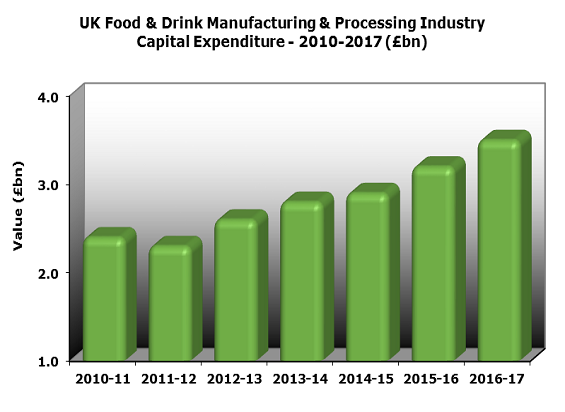
Why Japan??
The leading reasons for attracting agri- food companies are convenient access to raw materials and major markets. Japan now has more than 60 food and beverage processing companies employing over 6,000 people and focused in baked goods, meat products, frozen desserts, spices, honey, alcoholic beverages and more.
Easy access to Japan’s agricultural farm belt; supply chain support including temperature controlled and refrigerated logistics providers, equipment maintenance, and food grade packaging suppliers; available industrial land and building infrastructure. Finally the unique fresh water supply system certified to meet many elements of HACCP and ISO9001.
Conference Highlights
- Food Engineering
- Food science
- Food Technology
- Food fortification
- Food Rheology
- Food Biotechnology
- Food Biochemistry
- Food Grading
- Food Microbiology
- Food packaging
- Food Supplements
- Food Physical Chemistry
- Food Safety
- Food Preservation
- Food laws and regulations
- Nutrition
- Food Toxicology
- Food Nanotechnology:
To share your views and research, please click here to register for the Conference.
To Collaborate Scientific Professionals around the World
| Conference Date | December 02-03, 2019 | ||
| Sponsors & Exhibitors |
|
||
| Speaker Opportunity Closed | |||
| Poster Opportunity Closed | Click Here to View | ||
Useful Links
Special Issues
All accepted abstracts will be published in respective Our International Journals.
- Journal of Food Processing & Technology
- Journal of Food: Microbiology, Safety & Hygiene
- Journal of Food and Nutritional Disorders
Abstracts will be provided with Digital Object Identifier by





